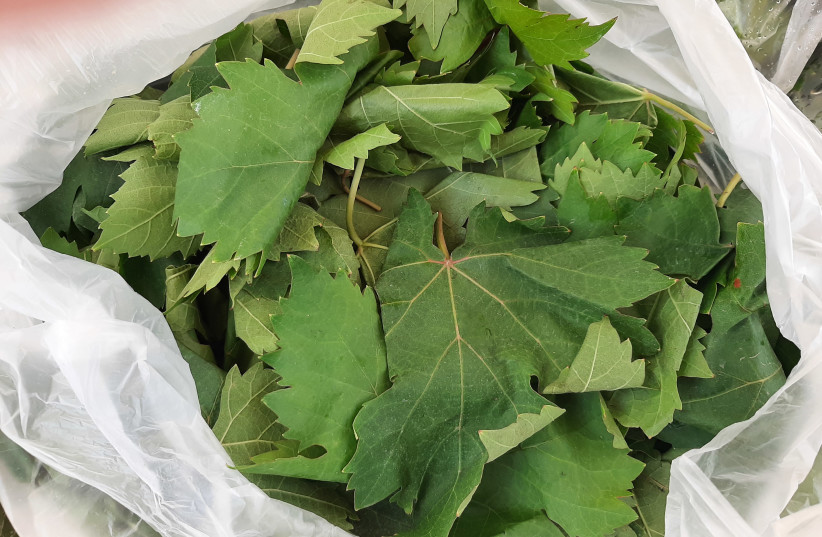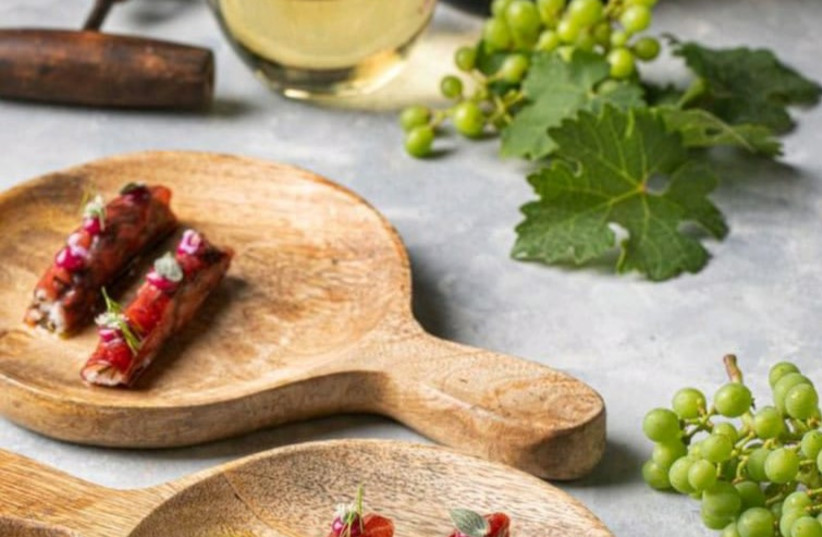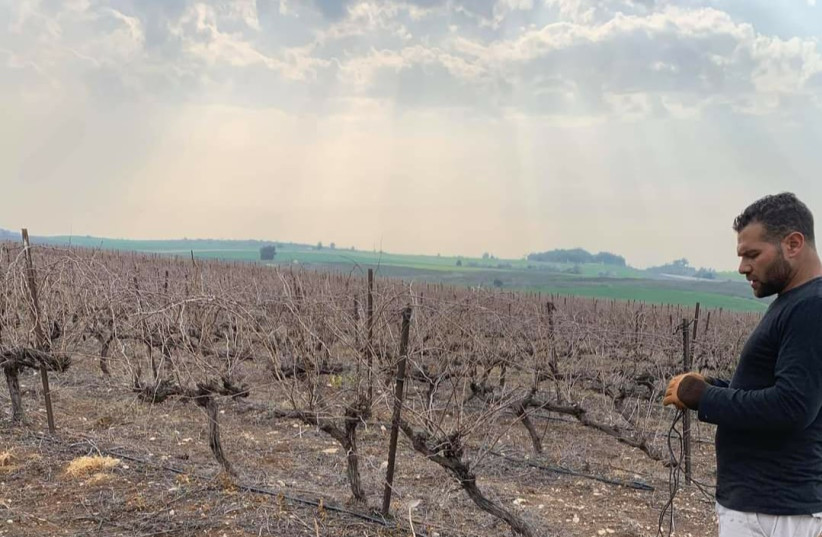In Judaism we have a blessing devoted to the fruit of the vine. This is mainly used over wine, although the grape is not known solely for producing wine, any more than the vine is only useful for growing grapes.
In the Eastern Mediterranean basin, wine has been made for thousands of years. In ancient times, this region was the equivalent of today’s France and Italy, both in terms of quantity and quality. Indeed, the Eastern Mediterranean was where wine culture was born, where it was shaped by the Canaanites, Israelites, Phoenicians, Ancient Greeks and Romans, and then nurtured by Judaism and Christianity.
Today, the countries of the Eastern Mediterranean are covered with wild vines, domestic vines and cultivated vineyards. Not all vineyards have the grandeur of those earmarked for wine, which are initially planted with wine grapes, and cultivated with the love and care of manicured gardens, with the sole objective of making fine wines. Many produce table grapes, suitable for eating, yet there are many different uses of grapes, apart from making wine or eating, and there are some useful byproducts of the vine.
During the winter, pruning is the main activity, which is essential for preparing the vine for a successful growing season. The vine cuttings are gathered up, bound in like sized bundles and dried. They will be sought after by barbecue aficionados. Vine cuttings provide an added element to grilling and smoking beef, lamb or fish. The vine wood burns very hot and imparts a smoky flavor. The national pastime of Israelis is barbecuing and they have it down to a fine art. The use of vine cuttings will only enhance the experience.
The vine leaf is an attractive part of the vine. It is relatively large, heart or hand shaped, with a toothy edging. For precious wine grapes, the vine leaves have a crucial role. They shade the grapes from the hot Eastern Mediterranean sun. On the other hand, sometimes leaves are removed in order to allow the clusters greater exposure. All this comes under the subject of canopy management, which is an important part of growing quality wine, especially in a hot climate.

The vine leaf is another byproduct of the vine. In the spring and early summer, the leaves may be carefully picked and put aside to make stuffed or rolled vine leaf dishes. Many of the domestic vineyards or wild vines in the Eastern Mediterranean were looked after by the woman in the family, domestic winemaking was their responsibility. Consequently, it was easy for them to make use of the vine leaves to make dishes that became associated with the region. Most famous are Greek dolmas or dolmades, which are stuffed or filled grape leaves. The filling may be rice, meat, fresh herbs and spices, made in full flavored bite sizes. They are delicious and nutritious, and though most associated with Greece, they are also commonly used in Cypriot, Lebanese, Turkish, Palestinian, Israeli and Druze cooking.
The vine leaf forms a similar role to other wrap vegetables like cabbage, lettuce and spinach. It needs to be picked when it is large enough, but still tender. Older leaves will be tougher, chewier and more leathery. The vine leaf acts as a receptacle and it absorbs the flavor and juices of the filling when stuffed. It may be used in salads, or be part of the filling itself. It tastes tangy, even citrusy, with a pleasant texture. It is mainly seasonal, but can be pickled in order to preserve them longer.

ISRAELI CHEFS are presently conquering the world with a new, creative version of Mediterranean food. Israeli cuisine is a fusion between the Eastern Mediterranean, the Middle East and North Africa and represents all the customs and flavors of the wider region combined together. The use of the vine leaf is everywhere in this region and stuffed vine leaves is a dish that really symbolizes the Eastern Med.
Later, when we arrive at the harvest in the late summer and early autumn, the grapes do not have to be made into wine. They may be made into alcohol free grape juice. In Israel, grape juice is bracketed together as part of the wine trade and in religious ritual, it is also permitted to use grape juice, which in Judaism has a status no different to wine. The grape juice I am referring to is not the bright purple concoction sold to children in tetra packs and sucked through a straw. It is a natural product made 100% from grapes and sold in a glass bottle. Israeli grape juices were once made from food table grapes, but these days, such is the excess of wine grapes, they are mainly made from Carignan (for red grape juice) and Colombard and Muscat of Alexandria (for white).
Israel produces something like 10-12 million bottles of grape juice annually. This is not a small quantity, when set against the 40-45 million bottles of wine produced a year. The main producers of grape juice are Arza, Barkan-Segal, Teperberg, Jerusalem and Zion wineries. Carmel is by far the largest producer and their Tirosh has been close to the hearts of grape juice lovers since before the founding of the state. Of the others, Beit Saba, produced by Zion Winery, is truly unique. It is bottled within 24 hours of the harvest.
In 1898, Carmel had an excess of grapes and decided to use them to make brandy (distilled wine.) Israel produced millions of bottles of brandy during its peak of popularity. In the 1990s Tishbi Brandy, Carmel 100, and Carmel 777 won some major international awards. Colombard and before that Dabouki, was usually the main grape used to make the base wine. However, the opening of imports, an unfriendly tax structure and the rise of whisky, which became the spirit of choice in Israel, coincided with the sharp decline of Israeli brandy.

Carmel stopped producing brandy in the early 2000s because it was not considered profitable. A tradition of more than 100 years, ground or rather whimpered to a halt. Even Tishbi Winery’s handsome pot still has become merely a tourist attraction, rather than being used on a regular basis.
Now, Carmel has relaunched brandy again, but it is with a difference. It is out-sourced from a third party continuous still, without the library of old brandies they used to hold. Maybe, both Cremisan Monastery and the Julius VI Brandy provide better quality alternatives for respectively an older aged brandy or a genuine artisan, small-scale production.
Once, Carmel used grape alcohol also to produce vodka and arak. Later they discovered imported molasses alcohol was cheaper, more practical and by using it they avoided complications with kashrut. When global brands became available in Israel, the locally produced spirits and liqueur industry crashed. However, Arak is still produced here. This is the indigenous spirit of the Eastern Mediterranean, known as Arak in Lebanon, Jordan and Israel, Raki in Turkey and Ouzo in Greece and Cyprus. Of the commercial Araks here, Elite Arak is still by far the largest in sales. Kawar is arguably the best in quality, but thankfully there are also craft distillers like Pelter and Julius, making artisan Araks. No doubt though, it is the Lebanese Arak that is the finest expression of this spirit.
In Lebanon, the grapes will be made into wine and then distilled to make Arak. Michael Karam in his excellent book Arak & Mezze, outlines the artisanal, domestic cycle in Lebanon. A family will harvest grapes from their own vineyard. What they can eat, they will keep as grapes. They will make the rest into wine. This they will drink through the winter months. As the wine begins to turn sour in the spring, they will distill the remainder two or three times in a rudimentary domestic still, adding anise to make arak. This they will drink during the summer, before the cycle repeats itself. Brun, El Massaya, Ksarak and Touma are some of the well-known brands, made by leading wineries. They normally use their indigenous varieties like Obeideh and Merwah as the base for making Arak. The Lebanese regard their Arak with the same reverence a Scotsman has for his whisky.
TURKEY IS the largest grape grower in the Eastern Mediterranean and the fifth largest in the world; however, only two to four percent of their grapes are reserved for winemaking. Their major industry for grapes is the production of raisins. Harvested grapes are dried and the berry dehydrated. The most romantic notion is of grapes drying naturally in the sun, lying on mats by the vineyard. The more commercial and practical option is machine drying to reduce the moisture content. Raisins are not so prevalent in Israel, though they are a popular snack for children.
Palestinians will produce dibs or grape molasses from white grapes. This grape syrup is as old as time. It provided sweetness before cane sugar, necessary calories during the winter and it was another way of maximizing the use of the precious annual yield of grapes. In fact, this is also part of the culture in Greece, Lebanon, Turkey and in other wine producing countries. Each country has its own name. Dibs can be mixed with tahini for breakfast, poured over pancakes, added to yoghurts, made into dried fruit leather or Malban, a bite size, fruit jelly cake with added pistachios.

I have left three more derivatives of wine for last. Grappa or Marc is a brandy made from pomace, the leftovers of the grapes after pressing. The Marc de Galilee produced by the Julius Distillery is a local example. Vermouth is an aromatic flavored fortified wine. The Vermut Sec de Galilee (made by Julius Distillery) and new individual expressions called Vedetta 52 Vermouth (by Eyal Drory). For those who remember the Carmel & Stock vermouths, these will be far more authentic, interesting and better quality. Lastly, grapes can be made into wine vinegar. Balsamic Vinegar from Italy is an exalted wine vinegar, while basic wine vinegar is hard to find here.
The final use of a vine is simply as shelter. The fact the vine is a natural climber and has large leaves, means that its most ancient use is giving shade. Many grew vines on a pergola or a trellis, and today many domestic balconies or patios are covered with leafy vines. The prophet Micah said “Each man will sit under his vine... and none shall make him afraid,” and while sitting there, they can contemplate the true versatility of the grapevine.
The writer is a wine industry insider turned wine writer, who has advanced Israeli wine for 35 years. He is referred to as the English voice of Israeli wines. www.adammontefiore.com
